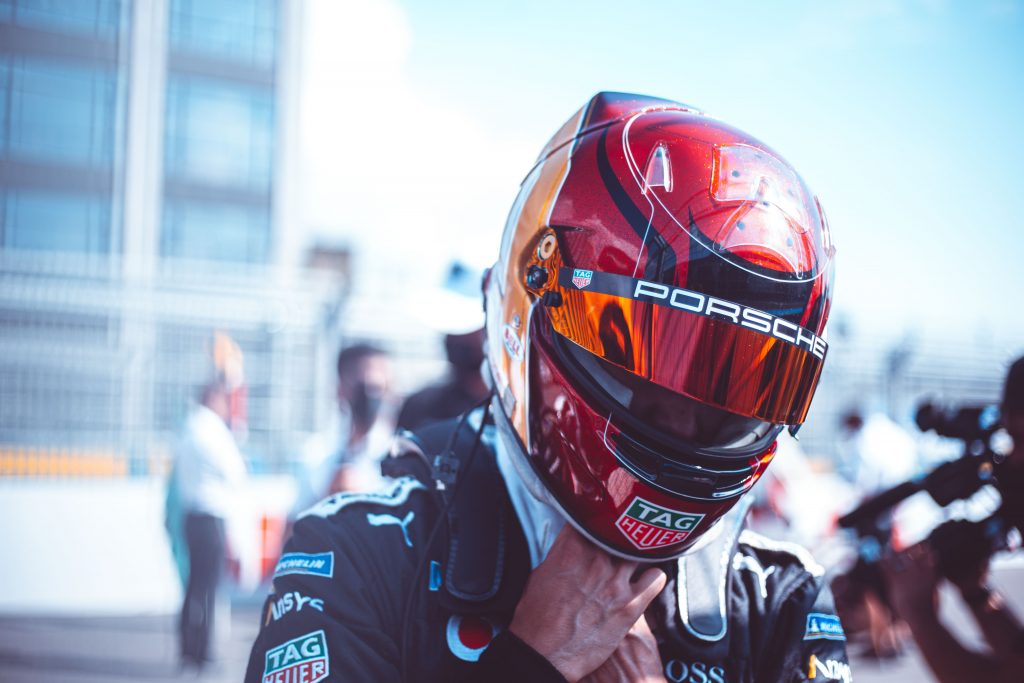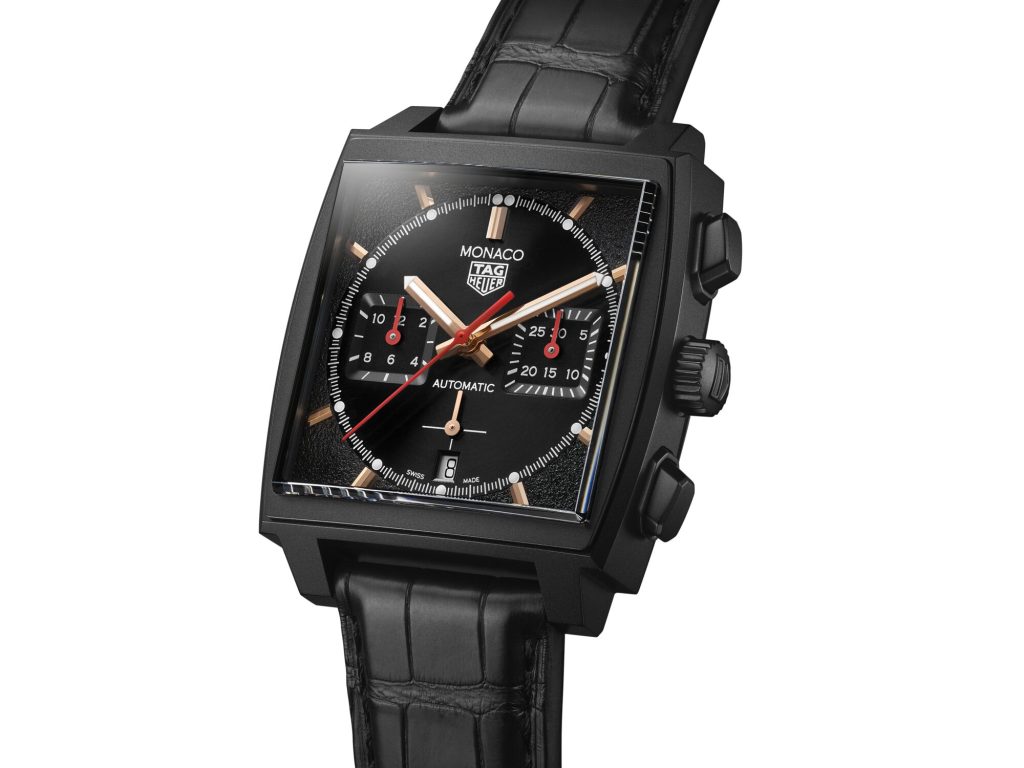The Future Of Racing, the Formula E Championship for Electric Cars
Three-time Le Mans winner Andre Lotterer on racing and the automotive industry as a whole

At the TAG Heuer boutique on Fifth Ave, mere days before the Formula E Grand Prix is set to take the racing world’s main stage in Red Hook, Brooklyn, pedestrians would be forgiven any confusion over the race cars up and down the street. Normally only seen racing through Monaco for the Grand Prix or at Le Mans, these cars are in NYC gearing up for what is set to guide the future of the sport and the automotive industry as a whole: Formula E.
The E (of course, short for electric) represents the shift that the auto world has undertaken in recent years. While it has become almost commonplace to see Teslas and other major auto manufacturers promoting their electric, rechargeable vehicles, only recently have we begun to see where a lot of those innovations are derived from and how some of that technology is being used to revolutionize the racing industry and the world of consumer automotive.
With the inaugural season in 2014, Formula E might be in its infancy but its effects are being felt—leading many to wonder if these high-performance race cars can turn green, perhaps the same will be possible with every consumer car in the future.

Teams like Porsche and TAG Heuer’s have been at the forefront of the racing pack to create vehicles that are as precise as they are fast, pushing their technological limits further with every race. As Jamie Reigle (the CEO of the pioneering electric car race) tells us, “Porsche is a very premium brand with a track record in motorsport. The DNA of the company is all about racing and all about success and having really high standards, and that’s fantastic for us as a championship—it raises the bar and the standards for everyone. We believe in a continuation of a very long history in motorsport of innovation and progress. The beauty of motorsport is the pinnacle of human endeavor in a sense that these fantastic drivers, who are the best at what they do, and the engineering and science that goes into developing cars.”
Prior to the race in Red Hook, we spoke with race car driver and three-time Le Mans winner, German-Belgian Andre Lotterer (currently racing for TAG Heuer Porsche) about the future of the sport and the industry.

As we’re at the TAG Heuer boutique getting ready for Formula E, can you tell us where you see the future of the sport going?
Motorsport before was more about the racing, the sport, but now we’ve added the sustainability aspect and represent the race of the future with electro-mobility. As you know, we race electrically and it’s going very well. We have a lot of manufacturers that are in this series and use it as a platform. The technology that we are pushing through racing is passing some really tough tests, so it’s very relevant for the automobile industry to have better range and more efficient cars.And we’re introducing the Gen3, the next generation of Formula E car, and there will be new features—more of a smaller battery and fast charging, which I think is very important for everyone out there with their road cars.
We go to different cities, try to find new locations to inspire people to move to electric cars and to understand that we can race with electric cars, meaning that it’s a proven technology and therefore makes a better and cleaner world.

Can you tell us the difference between when you are racing on streets for Formula E and on tracks for the other races? Does the car have to be adapted to street versus to a track?
Formula E brings the race to the people, to the cities, and the chairmanship is trying to find new locations with governments and new cities. It’s a big difference because you have to imagine when you race in the city, wherever you can, the asphalt and the road conditions are not as good as a permanent racetrack where it’s a perfect track with runoffs. It’s a big difference and it’s more challenging for drivers to race in cities. But the cars are adapted for it. We have groove tires like normal race cars on permanent tracks have slicks. And we have these tires that allow us to race with all weather, if it rains or not. But they work very well for city tracks, and I think that the car has a bit more suspension travel so we can drive over bumpier tracks. It is adaptive.

Is there any technology from the electric cars that you think we might see migrating to commercial vehicles?
I think we are the best example at Porsche because we are under the same roof as a factory team in the development center, and we have the Taycan as a high-performance electric sports car. We share a lot of information with the drivetrain, the way we calculate efficiencies. And us with the race car, we really go to the limit with the powertrain and the inverter and software and learn a lot of things that are put in our database and transferred to the Taycan or the future electric cars. It’s definitely a proving ground and especially at Porsche, because it’s a sports car brand. So every Porsche has performance in it and is built for the track as well.

What’s your favorite thing about driving electric race cars, and where in the world has it been the best to race them?
I think it’s Formula E in general; that we bring the races to the cities. We would never be able to race in New York or in the heart of Paris or in Rome or in Santiago. I think that it’s a privilege to be involved in, and link our sport with, sustainability and a cleaner world—which was very important for Motorsport to do. That is the aspect that I like most… but also racing. I really enjoy racing Formula E because the challenge is super-high, to race on city tracks between walls. Even though we might have less power than the cars in Formula 1, it’s still fun and exciting because we don’t need so much power on the city tracks. Everything is narrow. So we are at the end of a boulevard at 230-240 kilometers per hour, super-fast. I always say it’s like riding your bicycle inside your apartment—you don’t need to go very fast to get in trouble, and it’s very challenging.
Images courtesy of TAG Heuer/Porsche












